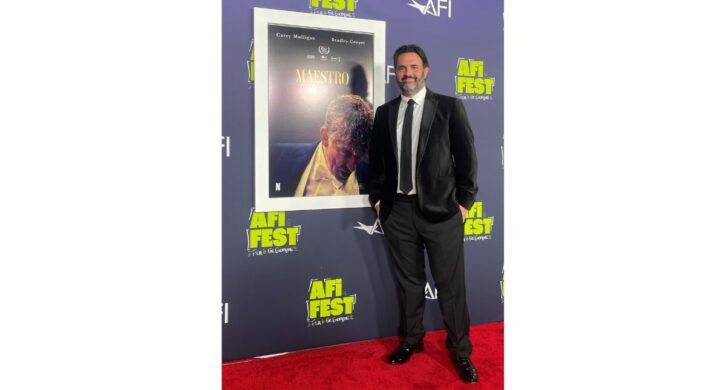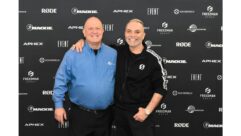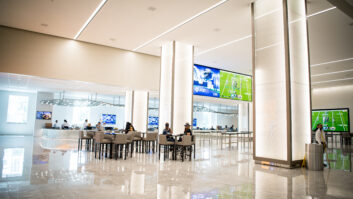
Los Angeles, CA (February 27, 2024) — Now streaming on Netflix, Maestro sees director and star Bradley Cooper embracing a Herculean labor: chronicling the life of legendary conductor and composer Leonard Bernstein. Connecting its myriad chapters via the narrative of Bernstein’s marriage to actress Felicia Montealegre (Carey Mulligan), the film explores Bernstein-the-man in ways never taught at any music school. Maestro has already earned nominations for seven Academy Awards, seven BAFTA awards, and two Screen Actors Guild awards — and won an American Film Institute award. One of those Oscar nods is for Best Sound, and mixing lead Steve Morrow, whose credits also include La La Land, A Star Is Born, and Ford v. Ferrari, had two equally challenging types of source to capture. First, a large cast dishing overlapping, rapid-fire dialogue; second, orchestral and choral music recorded in real time on set. A long time Lectrosonics user, Morrow employed SSM transmitters and Venue2 modular receiver racks for actors, HMa plug-on transmitters for booms, and LT transmitters paired with a DSQD digital receiver for communications. Wireless Designer software was employed for frequency coordination.
Cooper himself praises Morrow in a clip viewable on Maestro’s Facebook page, saying, “I love overlapping dialogue. Steve Morrow, the sound mixer, has a way of miking everybody and mixing it in the moment.”
Often, a great many actors are talking at once, such as in a pivotal party scene (beginning at 47:40) where the camera moves through various parties’ conversations. “For those kinds of scenes, we had 18 to 20 channels going including the SSMs on the actors, a couple of booms overhead, and some plant mics,” explains Morrow. “Then in post-production, the mixers spaced those out across surround channels, so watching the film you feel like you’re in the middle of the party as opposed to all the dialogue having that center-channel feel. It’s a very Robert Altman-esque style, but I’d say now the difference is that the technology has caught up with the idea that it can be narratively powerful to have, say, 20 people talking at once. Thanks in part to Lectro’s performance, the feedback from post was that the tracks were perfect.”
Maestro is as densely filled with music as it is with dialogue, culminating in a recreation of Bernstein conducting Mahler’s Resurrection Symphony at Ely Cathedral in 1973. “The London Symphony Orchestra brought in their recording team called Classic Sound. For our part, we brought a quadrophonic mic and a surround mic. As to wireless, we had an SSM on Bradley, an SSM on each of the main opera singers, a boom, and a pair of [HMa] plug-ons for a mid-side stereo mic that tracked with the camera. We recorded all the music performances live — the one with the choir, the one towards the end where he’s teaching students, all of it.”
How did Morrow juggle so many live frequencies in use at the same time? “With the Wireless Designer software,” he answers. “It worked perfectly. You just show up in the morning and scan, then start popping things on.”
Throughout production, Cooper was as deeply devoted to musical authenticity as he was to channeling Bernstein’s expansive personality, so Morrow was pleased to deliver audio that pristinely reproduced both music and dialogue.
“Both exceeded all expectations,” he says. “When I watched the movie for the first time, I was amazed. I asked Bradley Cooper, ‘What did you have to ADR or re-record?’ He said, ‘Nothing. It’s all production. It’s all original.’ That’s a testament to how well Lectrosonics works and how good it sounds.”
About Lectrosonics
Well respected within the film, broadcast, and theatre technical communities since 1971, Lectrosonics wireless microphone systems and audio processing products are used daily in mission-critical applications by audio engineers familiar with the company’s dedication to quality, customer service, and innovation. Lectrosonics received an Academy Scientific and Technical Award for its Digital Hybrid Wireless® technology and is a US manufacturer based in Rio Rancho, New Mexico. Visit the company online at www.lectrosonics.com.










